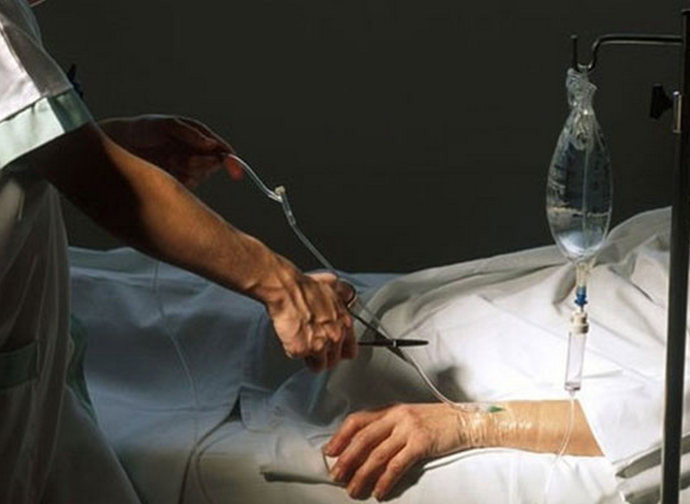Killed to donate their organs: euthanasia upsurges
Candidates for euthanasia and organ donors, the so-called "Good Samaritan euthanasia" is currently practised in Belgium, the Netherlands and Canada. Now a scientific article explains that there is the possibility this practice will be expanded to increase the availability of organs for transplantation. First of all by starting the euthanasia process at home to facilitate potential donors; then by targeting the mentally ill and depressed: healthy and young bodies, excellent for transplantation, of little use in an insane person.

What we could call Good Samaritan euthanasia has been practiced for years, especially in Belgium, the Netherlands and Canada: patients ask to be treated for euthanasia and then communicate they will donate their organs.
In some countries, euthanasia is moving so fast there is no longer any discussion of whether or not the ‘gentle death’ is ethically acceptable; there is no longer even any discussion of whether or not euthanasia followed by transplantation becomes euthanasia for transplantation purposes, with the future deceased being nudged to decide to choose death for the good of humanity. No, the present focus of the discussion has moved far beyond that: should these good Samaritans die at home or in hospital? Are the organs of better quality, when harvested from a body that’s still warm, following the first or the second protocol?
On this issue, the scientific journal Jama Surgery published an article last February entitled: “Organ Donation After Euthanasia Starting at Home Is Feasible”. The authors, Johan Sonneveld and Johannes Mulder, describe the protocol of euthanasia at home with a view to subsequent transplantation as follows: “The patient is only sedated at home, which marks the start of euthanasia in legal terms but medically is only intended to remove consciousness while vital functions are maintained stable. Coma induction and the start of the agonal phase subsequently take place in the intensive care unit after farewells at home and transportation.” Considerable care is taken when killing people; it is done legally, with respect for their wishes and for the clinical purposes of preserving precious organs for transplantation.
At this point the article veers towards pietism, which is one of the basic ingredients of euthanasia ideology: “Suggesting that euthanasia must take place in the hospital disregards the deepest wishes of these donors: sick, hospital-weary human beings who have decided to end their pain in the comfort and privacy of their own home”. Let us emphasise this again: the bone of contention is no longer ‘Euthanasia yes’ versus ‘Euthanasia no’, but where it is best to carry out the murder.
The authors go on to say: “Advocating the need for hospitalisation will alienate many potential donors”. We are in the middle of a marketing strategy: suppliers need to be reassured. But also the transplant candidates: “There is no conflict of interest. […] There is no need to play off the interests of transplant patients against the interests of euthanasia donors and vice versa”. Thus meaning, the euthanasia process started at home does not damage the organs. Let the transplant recipient rest assured: our organs from the home procedure are of excellent quality. This is another case of the objectification of the person. If unborn babies are referred to as the “product of conception”, these people can be referred to as the “product of euthanasia”. The patient is seen as a living storehouse of valuable organs. As is the case with aborted foetuses at Planned Parenthood clinics: first killed and then robbed of their organs to sell them. Doctors then become organ vampires, hunters of heads, hearts and lungs.
Finally, the conclusion of the abstract demonstrates just how far the culture of death has escalated, so that, in some minds, it has now succeeded in overturning the objective order of values. The authors advocate the at-home procedure and thus urge everyone to follow it with these words: “We can do better. Our patients deserve better”. Patients do not deserve to live, they deserve to be killed and emptied properly. The best thing, the infamous ‘best interest’ is to be killed for organ donation. And so, cloaked in the demure, thick robe of philanthropy that covers all filth, euthanasia is incentivised.
The most attractive candidates for Good Samaritan euthanasia are the mentally ill and the depressed: healthy organs in fragile minds. You can't ask for more than that. Healthy young bodies, untouched by tumours or senescence, particularly suitable for transplantation. It is easy to foresee an incentive to kill these people: those organs – so the argument goes – are of little use in a mentally ill or depressed person. Better to give them to someone who can make better use of them. In short, the usual utilitarianism touted, in this case, as charity.


